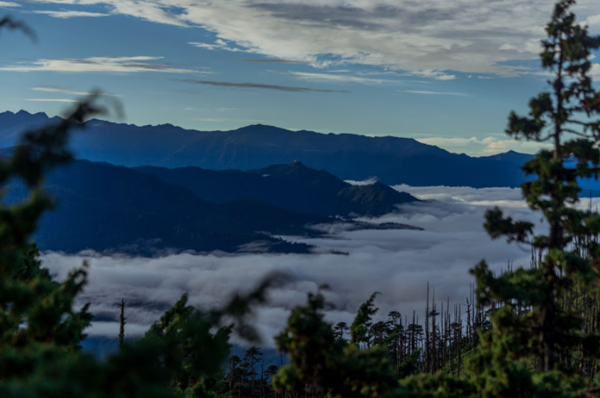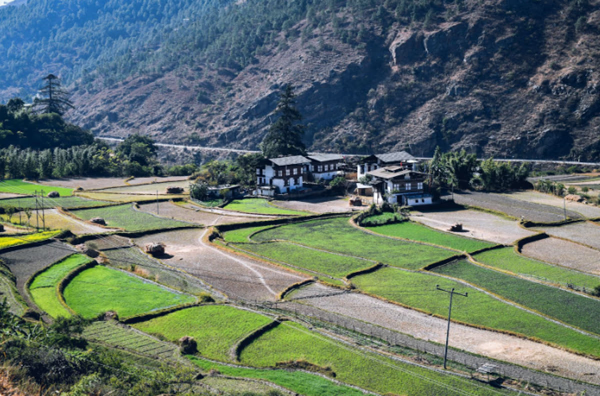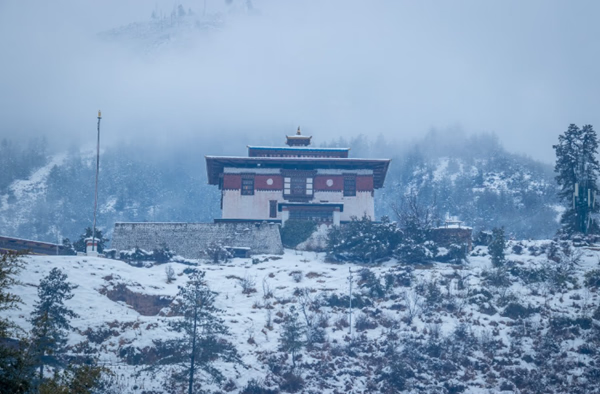
Understanding the diverse climate of Bhutan is essential when planning a trip. With regions ranging from subtropical valleys to snow-capped peaks, the climate offers something unique throughout the year.
In this guide, we’ll explain Bhutan's climate by season and region, helping you find the perfect time to visit based on your travel goals. Read this blog to discover the best Bhutan experience, no matter when you decide to go.
Understand Climate Zones In Bhutan
Bhutan’s climate is as diverse as its geography, with weather conditions varying significantly based on altitude. In the southern plains, close to the Indian border, the climate is subtropical, characterized by hot, humid summers and mild winters.
As you move toward the central valleys, the climate becomes more temperate, with warmer summers and colder winters. Meanwhile, the northern region, home to the towering Himalayan peaks, experiences alpine conditions with cold winters and significant snowfall.
This diversity allows travelers to experience a wide range of climates in one trip, from lush tropical forests in the south to crisp mountain air in the north. Each zone offers something unique, making Bhutan a year-round destination for adventurers and culture seekers.
Seasonal Breakdown Of The Climate Of Bhutan
The climate of Bhutan is defined by its dramatic seasons, each offering unique experiences for travelers. Depending on the time of year, you can expect everything from blooming valleys to snow-capped mountains. Here’s a breakdown of what you can expect during each season:
Spring (March-May)
Spring in Bhutan is a time of renewal, with warm temperatures and valleys filled with blossoming flowers, particularly rhododendrons. Daytime temperatures are mild, making it one of the most popular times for trekking and sightseeing. The weather is generally pleasant, with only occasional rain showers.
Summer (June - August)
Summer brings the monsoon season to Bhutan, especially in the southern regions. Heavy rains and high humidity dominate these months, creating lush green landscapes. While trekking might be more challenging due to rain and potential landslides, this season is perfect for those who love to photograph the vibrant beauty of nature. In the central valleys, the rain is moderate, but temperatures remain warm.

Autumn (September - November)
Autumn is considered the best season to visit Bhutan. The skies clear after the summer monsoons, revealing stunning mountain views. The temperatures are cool but comfortable, ideal for trekking, attending cultural festivals, and exploring Bhutan’s natural beauty. This season also brings vibrant autumn foliage, making it a favorite for photographers and outdoor enthusiasts.
Winter (December - February)
Winter in Bhutan can be quite cold, especially at higher altitudes, where snow is common. However, the lower valleys remain relatively mild, with dry weather and clear skies. Winter is a great time for cultural tours and peaceful exploration, as fewer tourists exist. If you don't mind the cold, you can enjoy stunning snow-covered landscapes, particularly in the northern and central regions.
What To Pack For Each Season In Bhutan
Packing for Bhutan depends largely on when you plan to visit and the region you’re exploring, as the climate of Bhutan can range from subtropical to alpine. Here’s a guide to help you prepare:
Spring (March-May)
Clothing: Light layers work best for this season. A light jacket or sweater is useful for cooler mornings and evenings, while short-sleeve shirts are comfortable for daytime activities.
Footwear: Comfortable trekking shoes are necessary if you plan to explore the outdoors.
Extras: Don’t forget sunglasses, sunscreen, and a hat, as the sun can be quite strong at higher altitudes.
Summer (June - August)
Clothing: Monsoon season brings heavy rains, so waterproof gear is essential. Pack a lightweight, breathable rain jacket, quick-drying clothes, and sturdy waterproof shoes.
Footwear: Waterproof hiking boots or sandals with a good grip will help you navigate wet trails.
Extras: Bring a compact umbrella, insect repellent for the humid south, and a water-resistant bag for electronics.
Autumn (September - November)
Clothing: Autumn weather is crisp and clear, so pack layers. A lightweight jacket or fleece is ideal for mornings, while t-shirts and long-sleeve shirts work for afternoons.
Footwear: Trekking shoes with good ankle support are necessary, especially for hiking trips.
Extras: A camera for capturing the stunning fall foliage and a hat or cap for sunny days.
Winter (December - February)
Clothing: Winter in Bhutan can be cold, especially in higher altitudes. Pack warm thermal layers, a heavy jacket, gloves, and a hat for added warmth. A scarf is also useful for chilly winds.
Footwear: Insulated boots for warmth, especially if you plan to visit snow-covered regions.
Extras: Sunscreen, as UV rays can be strong even in winter, and lip balm for dry air.

Best Time To Visit Bhutan Based On Activities
Choosing the best time to visit Bhutan depends largely on the activities you’re planning and the climate in Bhutan during that period. Each season offers something unique, whether you’re interested in trekking, cultural experiences, or photography. Here’s a guide to help you decide:
Trekking
Best Time: Autumn (September - November) and late Spring (March-May)
Why: Clear skies and cool, comfortable temperatures make autumn ideal for trekking, especially in the northern and central regions. In spring, the added beauty of blooming flowers enhances the experience, although there may be occasional rain showers.
Cultural Tours And Festivals
Best Time: Spring (March-May) and Autumn (September - November)
Why: Spring and autumn are the best seasons to experience Bhutan’s vibrant festivals, known as Tshechus, which are held nationwide. These events offer a glimpse into Bhutan’s rich cultural heritage, and the weather is perfect for exploring monasteries and historic sites.
Photography And Nature Lovers
Best Time: Summer (June - August) and Spring (March-May)
Why: If you want to capture Bhutan’s lush landscapes, summer is the best time. The monsoon season brings vibrant greenery and misty mountains, particularly in the southern regions. Spring is also ideal for photographing wildflowers, especially the rhododendrons that blanket the valleys.
Winter Activities And Snow Exploration
Best Time: Winter (December - February)
Why: Winter is perfect for exploring Bhutan’s higher altitudes, where snow transforms the landscape into a stunning winter wonderland. While cold, this season is quieter, allowing for a more peaceful experience, particularly for cultural and spiritual tours.
Conclusion About The Climate Of Bhutan
The climate of Bhutan is incredibly diverse, offering year-round opportunities for every type of traveler. From the lush, rainy summers in the south to the crisp, clear autumns perfect for trekking, Bhutan’s weather enhances the beauty and uniqueness of every region.
As the top travel agency in Bhutan, Druk Asia specializes in crafting personalized itineraries that take full advantage of the country’s seasonal highlights.
Ready to experience the best of Bhutan? Contact us and start planning your unforgettable adventure today!
Frequently Asked Questions About The Climate Of Bhutan
What Is The Best Time To Visit Bhutan?
The best time to visit Bhutan is in spring (March-May) and autumn (September-November), when the weather is pleasant and outdoor activities like trekking and festivals are in full swing.
How Does The Climate In Bhutan Vary By Region?
Bhutan’s climate varies by altitude. The southern regions are subtropical and humid, the central valleys experience a temperate climate, and the northern areas have cold, alpine conditions.
Is Monsoon Season A Good Time To Visit Bhutan?
Monsoon season (June-August) brings heavy rains, especially in the south. While trekking may be difficult, the lush landscapes are perfect for photography and nature lovers.
What Should I Pack For A Trip To Bhutan?
Pack layers for all seasons. In summer, bring waterproof gear for the monsoons; in winter, warm clothes for the colder, higher-altitude regions. Check out the full packing list for Bhutan.
Does Bhutan Experience Snow In Winter?
Yes, northern and higher-altitude regions of Bhutan experience snowfall during winter (December-February), while lower areas like Thimphu have cold, dry winters without much snow.
